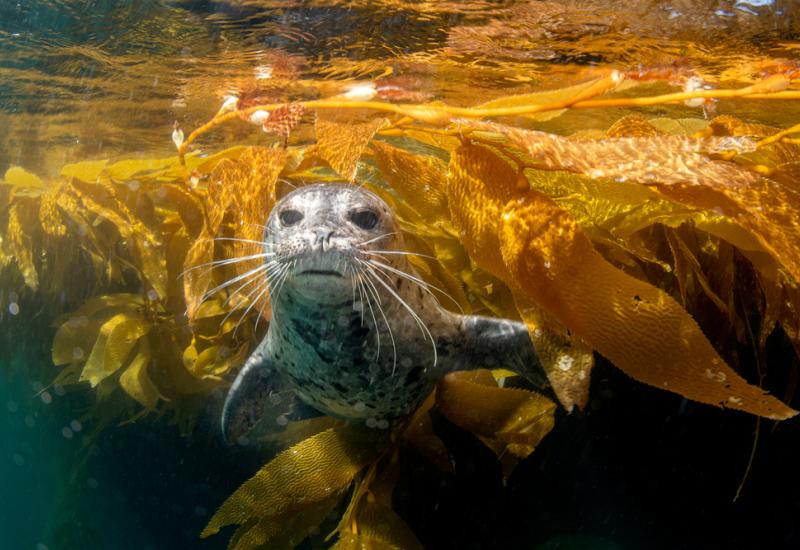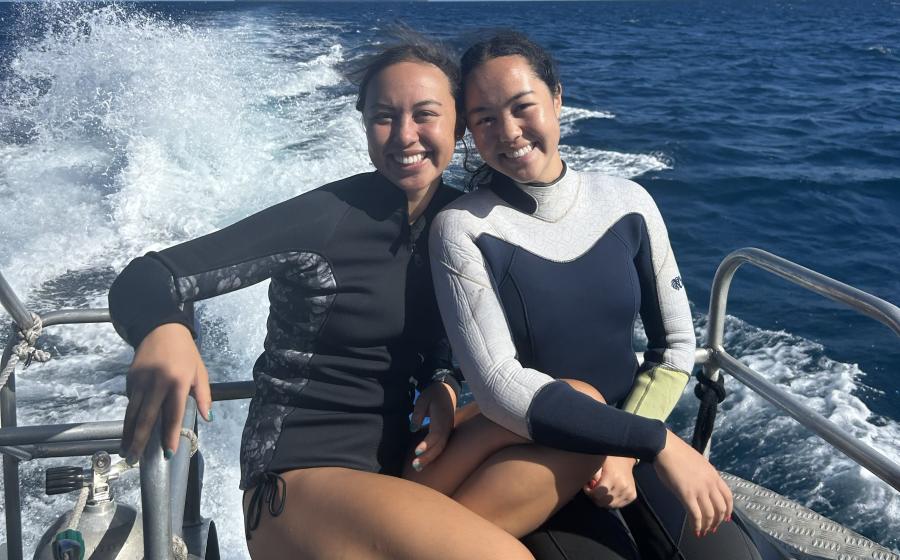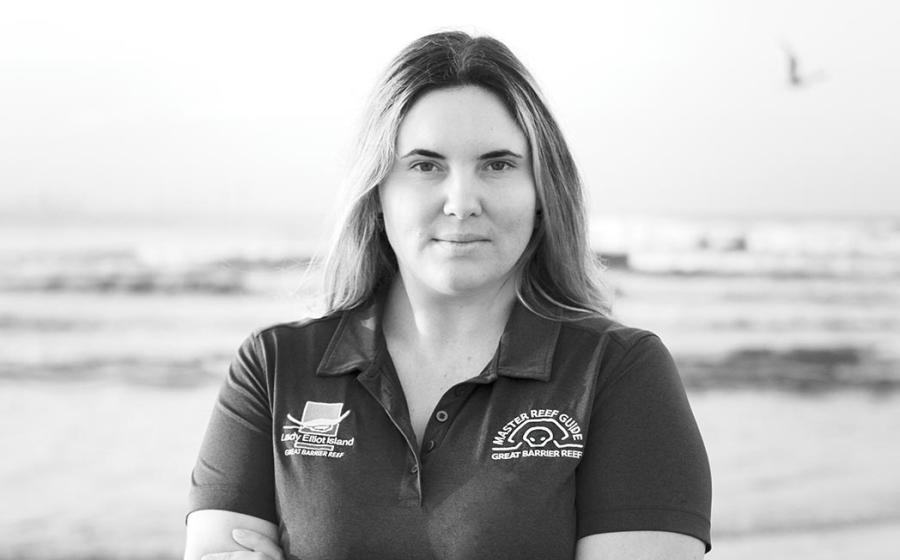Victoria, B.C.
August 2007
Text and photography by Brandon Cole
Superb diving rings Vancouver Island: Nanaimo and Campbell River on the eastern shore, Port Hardy atop the north, Barkley Sound guarding the western flank and Victoria nestled in the south. Together they're responsible for British Columbia's often-bestowed title as one of North America's best diving destinations. Like multi-hued precious stones circling an emerald Canadian crown, each sparkles a different color, each has its own character and charm.
We've come to Her Majesty's southernmost star, with its unmistakable British flavor, on a mission to enjoy two perfect days diving in Victoria. Our mantra: dive, eat, do, see and, of course, be merry.
Day 1, Below
We start things with an exclamation point, diving West Race Rock with a mixed group of tourists, locals and Steller's sea lions. Immediately on submersion, we're dive-bombed by the 500-pound pinnipeds. They twist around us at warp speed, blowing bubbles, barking and ogling us in seeming amusement. Drifting gently with the last of the ebbtide, a rocky slope gives way to a jumble of boulders and then a wall aglow with raspberry soft coral, sea stars and patches of purple hydrocoral. Cabezon recline on the brilliant tableau, and an octopus eyes us warily from its lair in the wall.
Twenty minutes into the dive, we're about-faced by the flooding tide. Clean, cool water straight from the open Pacific bathes us. With current building steadily, we ascend into the shallows and wind through kelp stalks crowded with hundreds of burgundy and silver-striped brooding anemones, a very lush site. And it's going to stay that way. It's the first marine-protected area in Canada, and it's easy to see why people rave about Race.
Back onboard the boat, we motor west. Majestic and snow-mantled, Washington's Olympic Mountains slide by on our left, keeping us company from across Juan de Fuca Strait. Swordfish Island is an ideal follow-up dive to the current-dependent Race Rocks. One can splash here pretty much anytime. This site's signature is a swim-through on the northeast corner, sometimes hidden by a thick tangle of bull kelp. Inside the tunnel, which averages just 15 feet deep, we find walls draped in fiery soft coral and white plumose anemones, perfect for wide-angle pictures.
Day 1, Above
In desperate need of refueling, we head straight into the city for tasty roadside eats and to strategize our next activity. Being high summer, the killer whales are in town. It's impossible to escape Orcamania. We jump into soft coral-bright floater suits, pile into a high-speed "Prince of Whales" zodiac, and fly eastward at 30 knots into Haro Strait where we have a date with L pod. This resident group's aerial antics--breaching, spyhopping and tail slapping--command our complete attention for the afternoon. As a bonus, we see a brand-new addition to the family, a precocious calf affectionately named L-108.
Windblown and waterlogged, we meet up with friends at the Flying Beagle Pub. Munching down on halibut burgers chased with inspired island microbrews, we plan Day Two's festivities, yelling back and forth over the din of the assembled crowd while hockey--what else could it be?--plays on the big screen.
Day 2, Below
We savor a civilized 9 a.m. start to the day, taking a leisurely drive through scenic Oak Bay where meticulously manicured hedges hide Tudor-style mansions. Ten Mile Point is at the end of White Rock Street, and a friend is waiting for us. "Welcome to my favorite shore dive in Canada," Dale says.
Current is the lifeblood of these cold-water reefs, responsible for the shockingly rich and vibrant marine life. But it's not to be taken lightly, and this site requires careful planning. Dale cautions that safety dictates diving only on slack just before the incoming flood tide, and preferably on days with small exchanges.
Once we're sure the time is right, we clamber down the rock to the water's edge and slip in. We descend to 80 feet and, keeping the wall to our right, proceed to poke along hunting for macro photo subjects.
There's no shortage. The wall is a canvas upon which the sea gods have painted a living mural. Of course there's the usual anemone overload, resplendent as the rainbow, but also grunt sculpins in barnacle homes, crabs quick to take offense, punk-haired warbonnet fish, and the photographer's favorite, red Irish lords.
After tank fills and a dive site briefing at Ogden Point Dive Center, we tackle The Breakwater. The bulwark that shields the Inner Harbour, it's the most popular shore dive in Victoria, day and night. Titan-sized stone blocks neatly stacked in tiers make for easy access and provide substrate for a thriving underwater community.
We submerge between dive flag markers 4 and 5 and glide down the steps to 70 feet. Along our eastward way, a half-dozen nudibranch species catch our eyes, and my wife spots a triton snail laying eggs, then a rare tiger rockfish. Next, a male wolf eel springs out to say hi, begging for an urchin no doubt. And then, a pile of scallop shells. At first glance, perhaps nothing more than garbage left out by the curb in suburbia. But to those in the know, this exciting find hints that a well-fed, eight-armed epicure lives nearby.
Day 2, Above
If this were your typical dive trip, an afternoon nap would have hit the spot right about now. Not for us, not on our whirlwind tour. Instead, it's off with the drysuits, and on with the kayak skirts. Renting boats from a shop along the waterfront, we paddle through postcard-perfect Inner Harbour and then north into the Gorge.
Back on land we wander through Chinatown and dodge red double-decker buses. Seemingly transplanted from England, they're full with tourists from afar who likely enjoyed afternoon tea at the Fairmont Empress Hotel. Moments later we're strolling past this icon, wondering which VIPs are in residence beneath the stately steeples, luxuriating inside its ivy-cloaked exterior. Perhaps the Queen Mum herself, on holiday.
Were our two days of diving Victoria perfect? Pretty close. How could it have been even better? Easy. Add an extra day or three to dive the HMCS Mackenzie, a 366-foot-long naval destroyer or the ancient, eerie cloud sponge gardens on Senanus Island deep in Saanich Inlet.
You get the picture. Though all of British Columbia's diving meccas offer excellent underwater attractions, Victoria stands at the forefront in its things to see and do above water before, between and after your day's dives.
InDepth
How To Get There: By car: Take a ferry from Tsawwassen, B.C. (near Vancouver), www.bcferries.com. Or from Seattle, Wash., drive north to Anacortes, then take the Washington State Ferry, www.wsdot.wa.gov/ferries. From Port Angeles, Wash., www.cohoferry.com. By air: Victoria International Airport (YYJ) is served by cities in Washington and B.C.
Dive Conditions: The mild climate means diving and topside fun year-round. Many consider September through May best for diving because of increased visibility (averages 40 to 60 feet) and better slack tides. Water temperatures average in the 50s, so bring a thick wetsuit or drysuit. Topside weather is glorious in summer and fall, with daytime temps in the 70s.
Dive Operators: Ogden Point Dive Center, www.divevictoria.com, is a full-service dive operation located next to The Breakwater. Boat dives, air fills, nitrox and specialty gases, equipment rental and sales, diving instruction, guiding services, cafe, warm freshwater showers, and more. Great Ocean Adventures, www.greatoceanadventures.com. Frank Whites, www.frankwhites.com.
For More Info: For a great book on Victoria diving, with directions to the sites, reef maps, critter descriptions, boat launches, dive shops, etc.: Diver's Guide--Vancouver Island South, by Greg Dombowsky, www.bcbooks.com/diversguide.html. A good diving reference web site: www.dive.bc.ca. For currents and tides, Canadian Tide and Current Tables Online at: www.tides.gc.ca/; and www.dairiki.org/tides/daily.php/rac. Make sure you also consult with experienced locals. For tourism info, www.tourismvictoria.com.
August 2007
Text and photography by Brandon Cole
Superb diving rings Vancouver Island: Nanaimo and Campbell River on the eastern shore, Port Hardy atop the north, Barkley Sound guarding the western flank and Victoria nestled in the south. Together they're responsible for British Columbia's often-bestowed title as one of North America's best diving destinations. Like multi-hued precious stones circling an emerald Canadian crown, each sparkles a different color, each has its own character and charm.
We've come to Her Majesty's southernmost star, with its unmistakable British flavor, on a mission to enjoy two perfect days diving in Victoria. Our mantra: dive, eat, do, see and, of course, be merry.
Day 1, Below
We start things with an exclamation point, diving West Race Rock with a mixed group of tourists, locals and Steller's sea lions. Immediately on submersion, we're dive-bombed by the 500-pound pinnipeds. They twist around us at warp speed, blowing bubbles, barking and ogling us in seeming amusement. Drifting gently with the last of the ebbtide, a rocky slope gives way to a jumble of boulders and then a wall aglow with raspberry soft coral, sea stars and patches of purple hydrocoral. Cabezon recline on the brilliant tableau, and an octopus eyes us warily from its lair in the wall.
Twenty minutes into the dive, we're about-faced by the flooding tide. Clean, cool water straight from the open Pacific bathes us. With current building steadily, we ascend into the shallows and wind through kelp stalks crowded with hundreds of burgundy and silver-striped brooding anemones, a very lush site. And it's going to stay that way. It's the first marine-protected area in Canada, and it's easy to see why people rave about Race.
Back onboard the boat, we motor west. Majestic and snow-mantled, Washington's Olympic Mountains slide by on our left, keeping us company from across Juan de Fuca Strait. Swordfish Island is an ideal follow-up dive to the current-dependent Race Rocks. One can splash here pretty much anytime. This site's signature is a swim-through on the northeast corner, sometimes hidden by a thick tangle of bull kelp. Inside the tunnel, which averages just 15 feet deep, we find walls draped in fiery soft coral and white plumose anemones, perfect for wide-angle pictures.
Day 1, Above
In desperate need of refueling, we head straight into the city for tasty roadside eats and to strategize our next activity. Being high summer, the killer whales are in town. It's impossible to escape Orcamania. We jump into soft coral-bright floater suits, pile into a high-speed "Prince of Whales" zodiac, and fly eastward at 30 knots into Haro Strait where we have a date with L pod. This resident group's aerial antics--breaching, spyhopping and tail slapping--command our complete attention for the afternoon. As a bonus, we see a brand-new addition to the family, a precocious calf affectionately named L-108.
Windblown and waterlogged, we meet up with friends at the Flying Beagle Pub. Munching down on halibut burgers chased with inspired island microbrews, we plan Day Two's festivities, yelling back and forth over the din of the assembled crowd while hockey--what else could it be?--plays on the big screen.
Day 2, Below
We savor a civilized 9 a.m. start to the day, taking a leisurely drive through scenic Oak Bay where meticulously manicured hedges hide Tudor-style mansions. Ten Mile Point is at the end of White Rock Street, and a friend is waiting for us. "Welcome to my favorite shore dive in Canada," Dale says.
Current is the lifeblood of these cold-water reefs, responsible for the shockingly rich and vibrant marine life. But it's not to be taken lightly, and this site requires careful planning. Dale cautions that safety dictates diving only on slack just before the incoming flood tide, and preferably on days with small exchanges.
Once we're sure the time is right, we clamber down the rock to the water's edge and slip in. We descend to 80 feet and, keeping the wall to our right, proceed to poke along hunting for macro photo subjects.
There's no shortage. The wall is a canvas upon which the sea gods have painted a living mural. Of course there's the usual anemone overload, resplendent as the rainbow, but also grunt sculpins in barnacle homes, crabs quick to take offense, punk-haired warbonnet fish, and the photographer's favorite, red Irish lords.
After tank fills and a dive site briefing at Ogden Point Dive Center, we tackle The Breakwater. The bulwark that shields the Inner Harbour, it's the most popular shore dive in Victoria, day and night. Titan-sized stone blocks neatly stacked in tiers make for easy access and provide substrate for a thriving underwater community.
We submerge between dive flag markers 4 and 5 and glide down the steps to 70 feet. Along our eastward way, a half-dozen nudibranch species catch our eyes, and my wife spots a triton snail laying eggs, then a rare tiger rockfish. Next, a male wolf eel springs out to say hi, begging for an urchin no doubt. And then, a pile of scallop shells. At first glance, perhaps nothing more than garbage left out by the curb in suburbia. But to those in the know, this exciting find hints that a well-fed, eight-armed epicure lives nearby.
Day 2, Above
If this were your typical dive trip, an afternoon nap would have hit the spot right about now. Not for us, not on our whirlwind tour. Instead, it's off with the drysuits, and on with the kayak skirts. Renting boats from a shop along the waterfront, we paddle through postcard-perfect Inner Harbour and then north into the Gorge.
Back on land we wander through Chinatown and dodge red double-decker buses. Seemingly transplanted from England, they're full with tourists from afar who likely enjoyed afternoon tea at the Fairmont Empress Hotel. Moments later we're strolling past this icon, wondering which VIPs are in residence beneath the stately steeples, luxuriating inside its ivy-cloaked exterior. Perhaps the Queen Mum herself, on holiday.
Were our two days of diving Victoria perfect? Pretty close. How could it have been even better? Easy. Add an extra day or three to dive the HMCS Mackenzie, a 366-foot-long naval destroyer or the ancient, eerie cloud sponge gardens on Senanus Island deep in Saanich Inlet.
You get the picture. Though all of British Columbia's diving meccas offer excellent underwater attractions, Victoria stands at the forefront in its things to see and do above water before, between and after your day's dives.
InDepth
How To Get There: By car: Take a ferry from Tsawwassen, B.C. (near Vancouver), www.bcferries.com. Or from Seattle, Wash., drive north to Anacortes, then take the Washington State Ferry, www.wsdot.wa.gov/ferries. From Port Angeles, Wash., www.cohoferry.com. By air: Victoria International Airport (YYJ) is served by cities in Washington and B.C.
Dive Conditions: The mild climate means diving and topside fun year-round. Many consider September through May best for diving because of increased visibility (averages 40 to 60 feet) and better slack tides. Water temperatures average in the 50s, so bring a thick wetsuit or drysuit. Topside weather is glorious in summer and fall, with daytime temps in the 70s.
Dive Operators: Ogden Point Dive Center, www.divevictoria.com, is a full-service dive operation located next to The Breakwater. Boat dives, air fills, nitrox and specialty gases, equipment rental and sales, diving instruction, guiding services, cafe, warm freshwater showers, and more. Great Ocean Adventures, www.greatoceanadventures.com. Frank Whites, www.frankwhites.com.
For More Info: For a great book on Victoria diving, with directions to the sites, reef maps, critter descriptions, boat launches, dive shops, etc.: Diver's Guide--Vancouver Island South, by Greg Dombowsky, www.bcbooks.com/diversguide.html. A good diving reference web site: www.dive.bc.ca. For currents and tides, Canadian Tide and Current Tables Online at: www.tides.gc.ca/; and www.dairiki.org/tides/daily.php/rac. Make sure you also consult with experienced locals. For tourism info, www.tourismvictoria.com.










